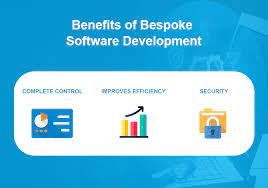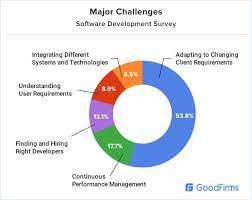Revolutionizing Healthcare Through Innovative Software Development
The Importance of Healthcare Software Development
In today’s rapidly evolving healthcare industry, the role of software development has become increasingly crucial. Healthcare software plays a vital role in enhancing patient care, improving operational efficiency, and ensuring regulatory compliance.
Benefits of Healthcare Software Development
Enhanced Patient Care: Healthcare software solutions enable healthcare providers to access patient information quickly and accurately, leading to improved diagnosis and treatment.
Operational Efficiency: Automation of routine tasks such as appointment scheduling, billing, and inventory management streamlines operations and reduces administrative burden.
Regulatory Compliance: Healthcare software helps organizations comply with complex regulations such as HIPAA by ensuring data security and privacy.
Challenges in Healthcare Software Development
Interoperability: Integrating different systems to ensure seamless data exchange remains a challenge in healthcare software development.
Data Security: Protecting sensitive patient information from cyber threats requires robust security measures and compliance with industry standards.
Future Trends in Healthcare Software Development
Telemedicine: The rise of telehealth services necessitates the development of user-friendly platforms for remote consultations and monitoring.
Artificial Intelligence: AI-powered healthcare solutions can analyze vast amounts of data to support clinical decision-making and improve patient outcomes.
In Conclusion
Healthcare software development plays a critical role in shaping the future of healthcare delivery. By leveraging innovative technologies and best practices, developers can create solutions that enhance patient care, optimize operations, and drive positive outcomes for both patients and providers.
7 Benefits of Healthcare Software Development: Transforming Patient Care and Operational Efficiency
- Enhances patient care by providing quick access to accurate medical information.
- Improves operational efficiency through automation of tasks like appointment scheduling and billing.
- Ensures regulatory compliance by maintaining data security and privacy standards.
- Facilitates seamless communication and collaboration among healthcare providers.
- Enables remote monitoring and telemedicine services for increased accessibility to care.
- Utilizes data analytics to identify trends, optimize treatments, and improve outcomes.
- Enhances decision-making processes with AI-powered tools for clinical support.
Overcoming the Top 6 Challenges in Healthcare Software Development
- High Development Costs
- Complex Regulatory Requirements
- Data Privacy Concerns
- Interoperability Challenges
- User Adoption Hurdles
- Maintenance and Updates
Enhances patient care by providing quick access to accurate medical information.
Healthcare software development significantly enhances patient care by enabling healthcare providers to swiftly access precise medical information. This quick and accurate access to patient data allows healthcare professionals to make informed decisions promptly, leading to improved diagnosis, treatment, and overall patient outcomes. By streamlining the process of retrieving vital medical information, healthcare software plays a crucial role in ensuring that patients receive timely and effective care tailored to their specific needs.
Improves operational efficiency through automation of tasks like appointment scheduling and billing.
Healthcare software development significantly enhances operational efficiency by automating essential tasks such as appointment scheduling and billing. By streamlining these processes, healthcare providers can save time, reduce errors, and improve overall productivity. Automation not only simplifies administrative workflows but also allows staff to focus more on delivering quality patient care. This pro of healthcare software development not only benefits healthcare organizations but also contributes to a more seamless and efficient healthcare system as a whole.
Ensures regulatory compliance by maintaining data security and privacy standards.
Healthcare software development plays a vital role in ensuring regulatory compliance by maintaining stringent data security and privacy standards. By implementing robust security measures and adhering to industry regulations such as HIPAA, healthcare software solutions help organizations safeguard sensitive patient information from unauthorized access and breaches. This focus on data security not only protects patient privacy but also fosters trust between healthcare providers and patients, ultimately contributing to a safer and more secure healthcare ecosystem.
Facilitates seamless communication and collaboration among healthcare providers.
Facilitating seamless communication and collaboration among healthcare providers is a significant benefit of healthcare software development. By implementing integrated platforms and tools, healthcare professionals can easily share patient information, coordinate care plans, and communicate in real-time. This streamlined approach enhances efficiency, reduces errors, and ultimately improves patient outcomes by ensuring that all members of the care team are well-informed and working together towards the best possible treatment strategies.
Enables remote monitoring and telemedicine services for increased accessibility to care.
Healthcare software development enables remote monitoring and telemedicine services, significantly increasing accessibility to care for patients. Through innovative technologies, individuals can receive medical consultations, monitoring, and treatment remotely, breaking down geographical barriers and providing timely healthcare services to those who may have limited access to traditional in-person care. This advancement not only enhances convenience for patients but also improves overall healthcare outcomes by ensuring that individuals can receive the necessary medical attention regardless of their location.
Utilizes data analytics to identify trends, optimize treatments, and improve outcomes.
Healthcare software development harnesses the power of data analytics to uncover valuable insights, identify trends, and optimize treatments, ultimately leading to improved patient outcomes. By analyzing vast amounts of healthcare data, software solutions can help healthcare providers make informed decisions, personalize treatment plans, and enhance the overall quality of care. This proactive approach enables healthcare professionals to deliver more effective and efficient treatments, resulting in better patient outcomes and a higher standard of healthcare delivery.
Enhances decision-making processes with AI-powered tools for clinical support.
Healthcare software development significantly enhances decision-making processes by incorporating AI-powered tools for clinical support. These advanced systems analyze vast amounts of medical data to provide healthcare professionals with real-time insights and recommendations. By leveraging machine learning algorithms, AI tools can identify patterns and predict outcomes, assisting doctors in making more informed decisions about patient care. This not only improves diagnostic accuracy but also helps in personalizing treatment plans, ultimately leading to better patient outcomes. Furthermore, AI-driven clinical support tools can streamline workflows by automating routine tasks, allowing healthcare providers to focus more on direct patient care.
High Development Costs
One significant drawback of healthcare software development is the high development costs associated with it. The necessity for implementing stringent security measures and ensuring compliance with industry regulations adds a substantial financial burden to the development process. The need to safeguard sensitive patient data against cyber threats and maintain regulatory standards contributes to the overall expenses, making healthcare software development a costly endeavor for organizations in the healthcare sector.
Complex Regulatory Requirements
Complex regulatory requirements pose a significant challenge in healthcare software development, as developers must navigate a web of regulations like HIPAA. Ensuring compliance with these stringent rules can slow down the development process, requiring careful attention to detail and thorough documentation at every stage. Failure to adhere to regulatory requirements not only delays the deployment of software solutions but also puts patient data at risk, highlighting the critical importance of incorporating regulatory compliance into the development workflow.
Data Privacy Concerns
Data privacy concerns in healthcare software development pose a significant challenge. Safeguarding patient data from breaches and unauthorized access requires continuous monitoring and updates. With the increasing volume of sensitive information stored electronically, the risk of data breaches is a constant threat. Developers must implement robust security measures, encryption protocols, and access controls to ensure the confidentiality and integrity of patient data. Compliance with strict regulatory requirements such as HIPAA is essential to protect patient privacy and maintain trust in healthcare systems. Constant vigilance and proactive measures are vital to address data privacy concerns effectively in healthcare software development.
Interoperability Challenges
Interoperability challenges in healthcare software development pose a significant obstacle to achieving seamless data exchange between different systems and healthcare providers. The complexity of integrating diverse platforms and ensuring compatibility hinders the efficient sharing of critical patient information, potentially leading to errors in diagnosis, treatment, and care coordination. Addressing these interoperability challenges is essential to realizing the full potential of healthcare software solutions in improving patient outcomes and streamlining healthcare operations.
User Adoption Hurdles
One significant challenge in healthcare software development is the issue of user adoption hurdles. Healthcare professionals, accustomed to established workflows and systems, may exhibit resistance towards incorporating new software solutions into their daily practices. This reluctance can result in delays in the implementation process and hinder the overall efficiency of healthcare operations. Overcoming these user adoption hurdles requires effective training, clear communication of benefits, and ongoing support to ensure that healthcare professionals embrace and utilize the new software effectively for improved patient care and operational outcomes.
Maintenance and Updates
One significant challenge in healthcare software development is the constant need for maintenance and updates. Ensuring that healthcare software remains current with evolving technologies and regulatory requirements demands a continuous investment of time and resources. Developers must dedicate efforts to address issues, implement new features, and adapt to changing standards to guarantee optimal performance and compliance. Failure to prioritize maintenance and updates can lead to system vulnerabilities, compatibility issues, and potential non-compliance risks within the healthcare environment.












